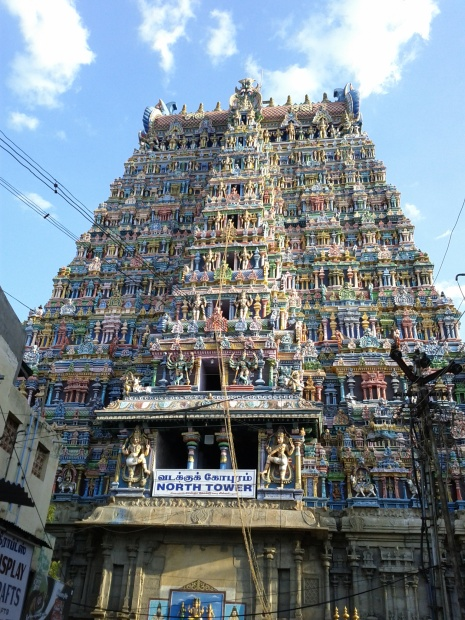The Hindus believe that unless God wishes it, they will not have the good fortune to visit a particular temple and take the blessings of a particular deity. And in a country with a religion where thousands jostle to visit a temple every day, a little divine intervention is often required to get past the main gates. The shrines are often housed deep inside the temple complex and if the premises are very large then it can be quite a journey getting there. But the journey to the center of the temple is often very interesting and packed with fascinating architecture along the way.
South Indian temples were designed to be heavens on earth by the master architects who were responsible for dreaming them. They occupied a place of pride in the hearts of the rulers who commissioned them. That is why they were painstakingly chiselled by the masons who forged these monuments from hard rock. The monarchs of that era spared no expense in getting the finest materials and the best builders to construct these masterpieces. The builders constructed the temples with great love, and that love is very much in evidence in the intricate attention to detail that the idols contain. It is not just the idols that are beautiful. Each pillar and each wall of these temples is a work of art and no area of these complexes has been left untouched by the brush of the painter or the tool of the mason.
The entrance to these holy places is particularly striking. The South Tower of the Madurai Meenakshi Temple contains 1511 sculptures that are incomparable in beauty. Inside the complex the pillars have been arranged with a level of geometric accuracy that would warm the heart of any mathematician. What is impressive beyond the obvious beauty of the complex is the level of effort taken by the builders at a time when technology was backward and modern construction equipment had not been invented yet. This effort is the result of a total devotion to God and the belief that their purpose went beyond the physical world and into the realm of the spiritual.
The main shrine of the Goddess Meenakshi is quite small as is that of her consort Lord Shiva. They would not look out of place in any of the small temples that dot the villages of India. But these shrines attract visitors from far and away. They come wearing turbans from the deserts of Rajasthan, they come offering prayers from the financial centres of Western India and they even come with backpacks from the nations of Europe. Then there are always the local citizens, the people of Tamil Nadu, whose lives revolve around these temples. Like their parents and their grandparents and their ancestors before them, they come seeking blessings of the divine. Young lovers sit on the steps near the pond and plan their future. Old ladies talk family gossip over packets of flavoured rice. Students pray to Goddess Sarawasti to bless them with knowledge, businessmen pray to Goddess Lakshmi to bless them with wealth and everybody prays to Lord Ganesha to remove the obstacles that prevent these goals from being achieved.
Modern day temples are not that different from art galleries and the proceedings held in those complexes are akin to film industry functions with the gods being the main stars. But there is something holy and pure about a temple that has been cut from rock. It inspires awe and devotion. As one goes deeper and deeper into the temple complex or in other cases higher and higher up a mountain, the devotee feels a sense of intimidation. It is easy to imagine that a divine presence truly lives in these rocks or resides high up in the mountains. The builders used their skills smartly to create a sense of wonder that is so essential when one is prostrating before the divine. The walls and pillars of these places of worship tell stories of love, war, faith, marriage and everyday life. They tell stories of the games that the deities played on earth with the people and with each other. Every devotee who has ever walked through the divinely sculptured gates of a temple in South India has felt that he is walking into the abode of the gods.
__END__

